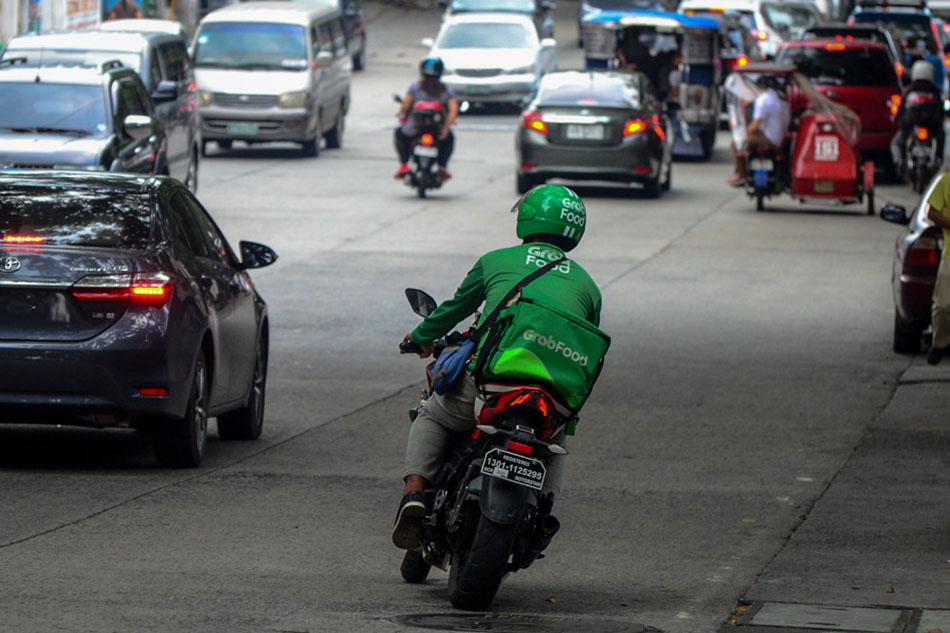Here's how GrabFood knows what you're craving | ABS-CBN
ADVERTISEMENT

Welcome, Kapamilya! We use cookies to improve your browsing experience. Continuing to use this site means you agree to our use of cookies. Tell me more!
Here's how GrabFood knows what you're craving
Here's how GrabFood knows what you're craving
ABS-CBN News
Published Mar 10, 2021 06:30 AM PHT
MANILA -- Ever wondered how GrabFood knew that you wanted to order pizza for dinner?
MANILA -- Ever wondered how GrabFood knew that you wanted to order pizza for dinner?
A virtual session with Southeast Asian media was recently held by the food delivery app to show how algorithms and systems help determine users' cravings.
A virtual session with Southeast Asian media was recently held by the food delivery app to show how algorithms and systems help determine users' cravings.
Xiaole Kuang, Grab's head of engineering and deliveries, said sections from the app are updated in real-time to highlight patterns derived from what users are ordering and looking at.
Xiaole Kuang, Grab's head of engineering and deliveries, said sections from the app are updated in real-time to highlight patterns derived from what users are ordering and looking at.
For example, if a user searches for a particular dish or fast food restaurant, he or she will see the feed reflect similar options almost immediately.
For example, if a user searches for a particular dish or fast food restaurant, he or she will see the feed reflect similar options almost immediately.
ADVERTISEMENT
Kuang said the recommendations are arranged based on GrabFood's "ranking logic," which considers factors such as merchant popularity, estimated time of arrival, and driver availability.
Kuang said the recommendations are arranged based on GrabFood's "ranking logic," which considers factors such as merchant popularity, estimated time of arrival, and driver availability.
These are then matched with a user's past browsing and ordering history, such as his or her preferred cuisine and budget.
These are then matched with a user's past browsing and ordering history, such as his or her preferred cuisine and budget.
Merchants that closely match a user's profile are then listed first on the app.
Merchants that closely match a user's profile are then listed first on the app.
If a dish or restaurant that a user searched for is unavailable or has less than four options, Kuang said GrabFood finds merchants "based on keyboard similarities on the menu, powered by machine learning capabilities."
If a dish or restaurant that a user searched for is unavailable or has less than four options, Kuang said GrabFood finds merchants "based on keyboard similarities on the menu, powered by machine learning capabilities."
FOOD PREPARATION, DELIVERY
According to Kuang, GrabFood riders in the region usually spend six to 11 minutes waiting in restaurants for merchants to finish preparing customer orders.
According to Kuang, GrabFood riders in the region usually spend six to 11 minutes waiting in restaurants for merchants to finish preparing customer orders.
ADVERTISEMENT
The app's system can give two or more orders with nearby drop-off or pick-up points to one rider so he or she can complete them in a single trip.
The app's system can give two or more orders with nearby drop-off or pick-up points to one rider so he or she can complete them in a single trip.
This is what Kuang referred to as "order batching," which is designed to help optimize GrabFood's fleet during peak hours.
This is what Kuang referred to as "order batching," which is designed to help optimize GrabFood's fleet during peak hours.
In moments of a "supply crunch," or when there are too many orders and too few riders, GrabFood's system starts reducing the delivery radius to avoid cancellations from users.
In moments of a "supply crunch," or when there are too many orders and too few riders, GrabFood's system starts reducing the delivery radius to avoid cancellations from users.
This is applied until the order completion rate stabilizes, or more riders have become available in the area.
This is applied until the order completion rate stabilizes, or more riders have become available in the area.
Related video:
ADVERTISEMENT
ADVERTISEMENT



